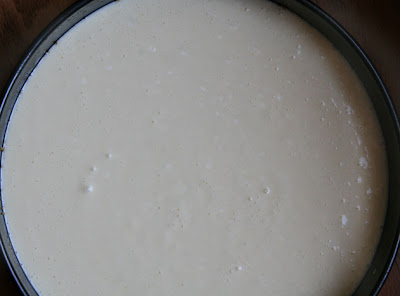Not because of the unique date, although that's pretty cool, especially at 11:11:11 11-11-11.
Today is special because it's Veterans Day.
It's been all over the news this freezing, frosty morning: a sobbing, preschool little girl is surprised in class by her father's return from Afghanistan; a solemn Vietnam veteran with empty shirt sleeves participated in a pre-Veterans Day parade; and Cindy McCain informed me that an average of 18 deaths each day are attributed to war-related PTSD.
But as I thought about Veterans Day this morning, before that first cup of much-needed coffee, before I clicked the remote to hear about today's world events, my thoughts went back five years ago to a charmingly endearing WWII veteran sharing with me his stories of war, meeting Patton and Willie, and how this once-strapping elderly gentleman helped free the prisoners of Dachau.
“Welcome to hell.”
Those were the words spoken to 18-year-old Joe Sacco by a fellow infantryman when they entered the gates of Dachau on May 29, 1945. Fashioned atop the gates was a sign reading “Arbeit Macht Frei” or “Work Makes Free.” Yet it wasn’t work that freed the prisoners of Dachau. It was the American troops.
Joe grew up in Birmingham and lived there until his death a few years ago, more than 60 years after he witnessed the atrocities at Dachau.
“Everywhere I looked, in every direction, I saw dead women, children, old men, babies, beaten, starved, stabbed, shot, butchered, and left to rot on the ground,” he recalls in Where the Birds Never Sing, a book written about his experiences by his son, Jack Sacco.
Holocaust survivor Max Steinmetz, also of Birmingham, spent time at Dachau but wasn’t there when Joe and the 92nd Signal Battalion arrived. He had left weeks earlier on a death march before being liberated by American troops. He realizes that without the American, British, and Russian forces, liberation day might never have arrived.
 |
| WW II veteran Joe Sacco and Holocaust survivor Max Steinmetz |
“We were roughly pulled out of the cattle car and sent to a long line. My mother, father, and five-year-old sister were sent to the left. My brother and I were ordered to the right. We were issued striped prison uniforms with identification numbers. Our head was shaved, and we were sent to the barracks.
A few hours later, I stepped out of the barracks. There was a thick heavy smoke and a nauseating odor that made me physically ill. I asked another prisoner what was happening, and he began to ask me about my arrival. I told him that I had just gotten off the train with my family and that my brother and I had been sent right. The rest of my family had been sent left.”
“That smoke and odor is your family burning,” he explained. “The line to the left goes to the crematorium.”
That was the tortured moment of truth for Max.
More than three million Jews were murdered in gas chambers. New arrivals to the camp were told to hang their clothing on numbered hooks in the undressing room and, as a ploy, were instructed to remember the numbers for later. They were taken into the adjacent gas chamber which was disguised as a large shower. Pellets of the commercial pesticide Zyklon-B were released into the chamber. When the pellets made contact with air, lethal cyanide fumes were released and rose toward the ceiling. Children died first, since they were closer to the floor. Pandemonium erupted as the bitter, almond-like odor spread upward, with adults climbing on top of each other until a tangled heap of dead bodies reached to the ceiling.
Special squads of Jewish slave laborers called Sonderkommandos bore the grim task of untangling victims and removing them from the gas chambers. Next they extracted any gold fillings from the victims’ teeth and searched body orifices for hidden valuables. Clothing, money, jewelry, eyeglasses, and other valuables were sorted and shipped back to Germany for re-use. Corpses were disposed of by various methods including mass burials and cremation, either in open fire pits or in specially designed crematoria such as those used
at Auschwitz.
As Allied troops moved across Europe in a series of offensives on Germany, they began to encounter and liberate concentration camp prisoners, many of whom had survived death marches into the interior of Germany.
Soviet forces were the first to approach a major Nazi camp, reaching the camp of Majdanek near Lublin, Poland, in July 1944. On January 27, 1945, they entered Auschwitz and found hundreds of sick and
exhausted prisoners. The Germans had been forced to leave these prisoners behind in their hasty retreat from the camp. Russian troops also liberated camps at Stutthof, Sachsenhausen, and Ravensbruck.
The liberation process was continued by American, British, Canadian, and French troops. The Americans were responsible for liberating Buchenwald, Dachau, and Mauthausen, while British forces liberated camps in northern Germany, including Bergen-Belsen.
“I met Joe several years ago,” Max shared with me to the background noise of Birmingham's city traffic. “It’s been amazing to hear him talk about that day and how the troops felt when they learned the truth of the Holocaust. And it seemed that a circle had been completed—the Liberator met the Liberated.”
I'm going to salute a veteran today.
I'm going to say thank you, Joe!
And I know Max, and thousands of others will, too.
(Max Steinmetz is one of 20 survivors featured in Darkness into Life: Alabama's Holocaust Survivors Through Photography and Art.)


















